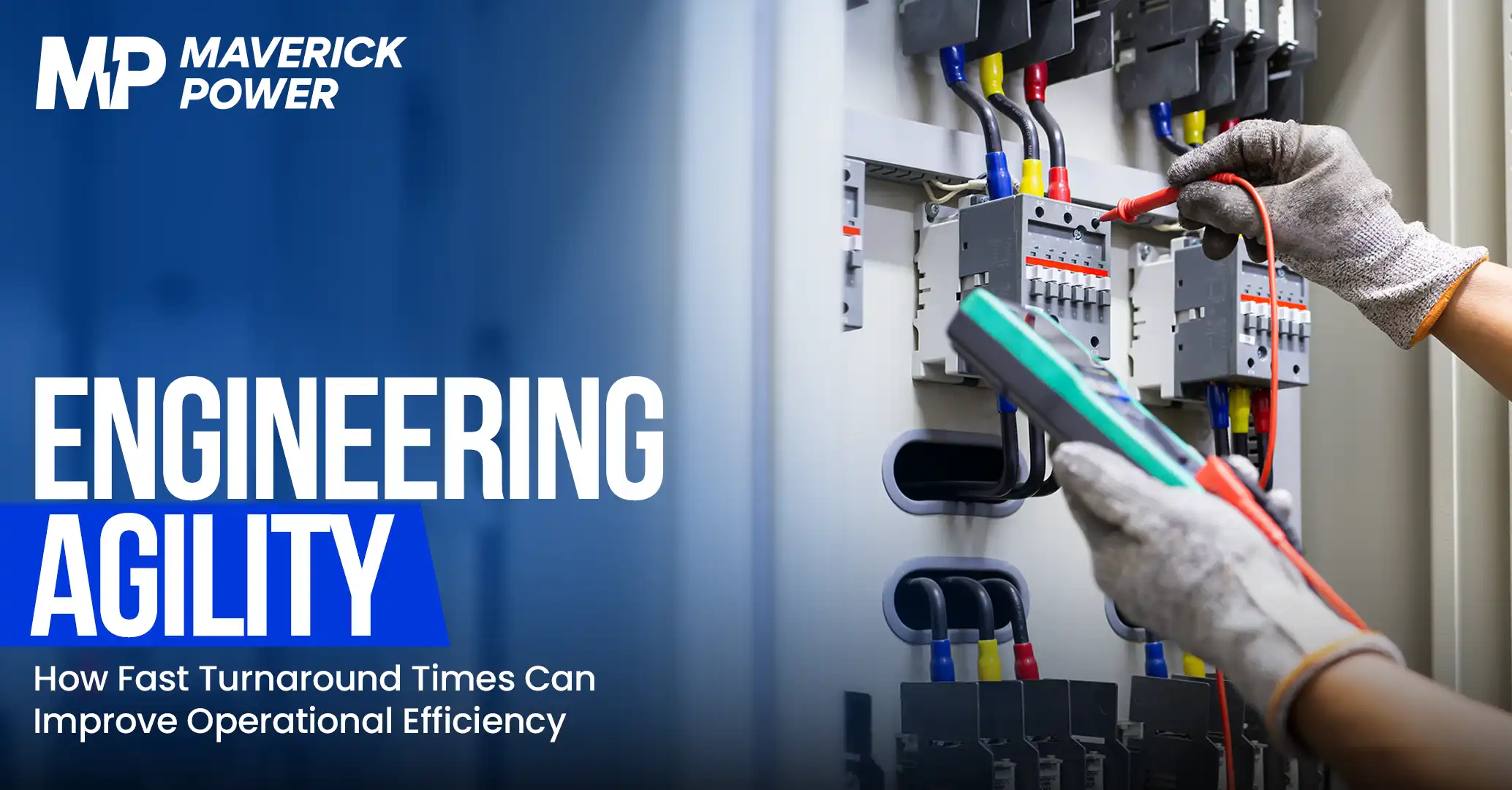In the blink of an eye, markets shift. Customer demands evolve. Opportunities emerge and vanish. In this lightning-fast business landscape, the power to adapt quickly isn’t just an advantage—it’s a lifeline. Yet, for many organizations, there’s a glaring mismatch between the speed of business and the pace of their power infrastructure upgrades. This disconnect isn’t just frustrating—it’s costing companies millions in lost opportunities and operational inefficiencies.
Enter the world of engineering agility: a game-changing approach that’s rewriting the rules of power infrastructure. Imagine a reality where your data center capacity doubles in weeks, not months. Where your manufacturing plant pivots to new production lines seamlessly, powered up and ready to go in days. Where your hospital expands its critical care units at the speed of urgent need, not bureaucratic timelines.
This isn’t science fiction. It’s happening now, driven by a revolutionary focus on fast turnaround times in power solutions. But what exactly is engineering agility, and how is it transforming businesses across industries?
The Impact of Slow Turnaround Times on Operations
Before we get into the solutions, let’s examine the challenges that businesses face when dealing with long lead times for power infrastructure. The consequences of slow turnaround can be far-reaching and significantly impact a company’s bottom line:
- Supply Chain Delays: Traditional power infrastructure projects often suffer from extended supply chain delays, leaving businesses vulnerable to market fluctuations and unable to meet changing demands.
- Lack of Flexibility: Rigid, one-size-fits-all power solutions can take months to implement, making it difficult for companies to adapt to evolving operational needs quickly.
- Prolonged Installation Timelines: Complex power systems with lengthy installation processes can lead to extended periods of downtime, directly impacting productivity and revenue.
These challenges translate into real pain points for businesses:
- Delayed projects that miss crucial deadlines.
- Increased costs due to prolonged implementation and downtime.
- Lost revenue resulting from operational inefficiencies.
- Inability to scale operations in response to market demands.
In mission-critical environments, where every second of downtime can result in significant losses, these issues become even more pronounced. The need for a more agile approach to engineering and power infrastructure is clear.
The Solution: Fast, Reliable, and Customized Turnaround
To address these industry-wide challenges, forward-thinking companies are adopting innovative approaches that prioritize speed, flexibility, and customization. These solutions focus on three key areas:
- Speed to Market: By leveraging modular designs and agile processes, companies can significantly reduce lead times for power infrastructure projects. This approach allows for rapid deployment of tailored solutions, getting businesses up and running faster than ever before.
- Flexibility in Design: Custom solutions that adapt to the unique needs of each customer are essential for quick implementation without sacrificing quality. This flexibility ensures that businesses can get exactly what they need when they need it, without being constrained by off-the-shelf options.
- Seamless Execution: A skilled team and streamlined processes are crucial for smooth project execution. By reducing bottlenecks and enhancing operational efficiency, businesses can minimize downtime and maximize productivity.
Key Components of Agile Engineering
To achieve true engineering agility, several key components must work in harmony:
- Modular Design for Quick Customization: Modular systems allow for fast customization to fit specific operational needs. This approach enables rapid adaptation to changing requirements without starting from scratch each time.
- Rapid Deployment with Reliable Supply Chain Management: An optimized supply chain ensures access to necessary parts and materials, reducing potential delays and keeping projects on track.
- Experienced Team for Efficient Execution: Expert engineers who work closely with clients are essential for fast, accurate, and efficient deployment of power systems. Their knowledge and experience can help anticipate and overcome potential challenges before they become issues.
- Tailored Support for Continuous Operations: Ongoing support and maintenance are crucial for keeping operations running smoothly long after the initial implementation. This continuous care ensures that systems remain optimized and efficient over time.
How Agile Engineering Improves Operational Efficiency
The benefits of adopting an agile engineering approach extend far beyond just faster implementation. Here’s how it can significantly improve operational efficiency:
- Faster Time to Market: Quick turnaround helps businesses get their operations up and running rapidly, minimizing downtime and increasing productivity. This speed can be a game-changer in competitive markets where being first can make all the difference.
- Enhanced Flexibility: Customized solutions allow businesses to quickly adapt to changing needs and market demands without long delays. This agility enables companies to seize new opportunities and respond to challenges more effectively.
- Reduced Operational Costs: Efficient power deployments reduce labor, project management, and downtime costs. By streamlining the implementation process, businesses can allocate resources more effectively and improve their overall cost structure.
- Mitigated Risks: Fast delivery minimizes risks associated with prolonged timelines, such as potential system failures or missed deadlines. This risk reduction can have a significant positive impact on a company’s reputation and bottom line.
Welcoming the Future of Engineering Agility
In today’s competitive business environment, the ability to adapt quickly and efficiently is more crucial than ever. Fast turnaround times in power infrastructure projects are no longer a luxury—they’re a necessity for businesses looking to stay ahead of the curve.
By adopting agile engineering principles and partnering with innovative solutions providers, companies can:
- Dramatically reduce implementation timelines.
- Increase operational flexibility and adaptability.
- Minimize downtime and associated costs.
- Mitigate risks associated with outdated or insufficient power infrastructure.
The future belongs to those who can move fast without sacrificing quality or reliability. As we’ve seen, agile engineering approaches offer a clear path to achieving this balance, enabling businesses to thrive in even the most demanding environments.
Are you ready to revolutionize your operational efficiency with agile engineering solutions? Learn how custom power solutions can address your specific challenges with speed and reliability. Visit our website to learn more about enhancing your operational efficiency and staying ahead in today’s fast-paced business world.
